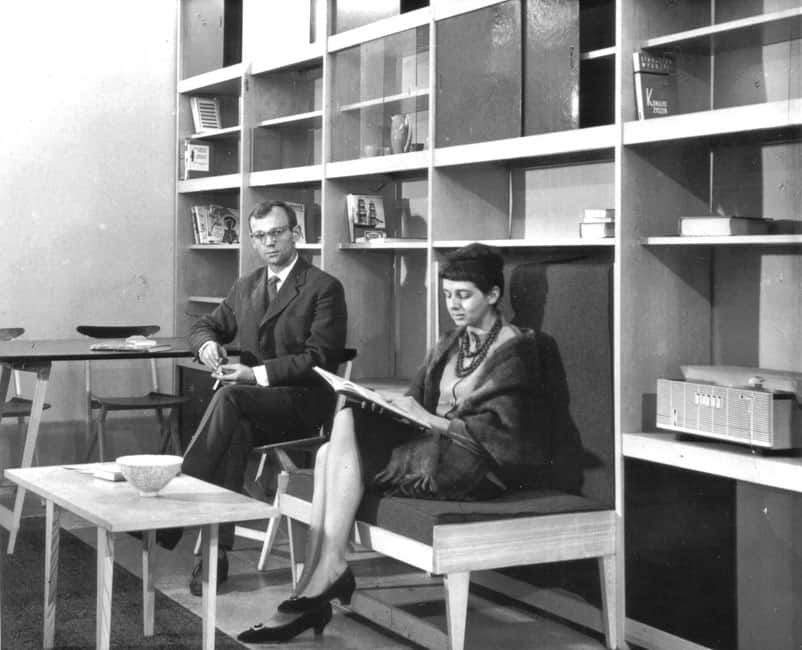They say that behind every successful man stands a strong woman. When it comes to good design, behind its success stands usually more than one person or one situation. In “D-File” series of mini-essays, Ania Diduch – art and design critic tells the stories behind Polish designs and designers, both iconic and forgotten. Just like in police files, she collects the evidence, talks with the witnesses, examines the photos and finally writes the report.

The Kowalscy, in the 60s; source: nowymodel.org
It would be an understatement to say that Bogusława and Czesław Kowalski changed the face of Polish design. It was their “meblościanka” which epitomised common Polish flat interiors during the Soviet period: a piece of furniture featuring bookshelves, drawers and cupboards. Highly functional but notoriously disliked. Everyone, regardless of individual aspirations and origins – had one. It almost seemed like the “meblościanka” proved the argument of equality central to the communist revolution.
That being said, it is even more compelling to notice that two years ago the nowymodel.org Foundation from Poznań released a limited edition of Kowalski’s chair. This edition originally matched the “meblościanka” set, but never went to mass production. The reasons for this remain unclear. It might be the fact that there were already a few types of this chair on the market. The only person who could possibly remember something about it is Jacek Kowalski, the designer’s son and the successor of their archive. As he confessed during one the interviews, at the time he wasn’t even aware of the chair’s existence. “The thought of the chair being the “IT” thing, came with time and help from a young art historian – Filip Speka – Kowalski says – Filip pointed it out to me. After our conversation, I dug through our family archive and found the only drawing of the chair from 1961.”
Aside from its age, the chair looks more than fine. The lines and shapes are fresh; the use of plywood is on trend. Designed for mass production, almost sixty years on the chair fits right into the new model of furniture consumption, which is considered a limited edition for collectors. A twist possible only in a country with such complicated history as Poland.

Kowalski’s newly produced chair; source: nowymodel.org

Kowalski’s newly produced chair; source: nowymodel.org








